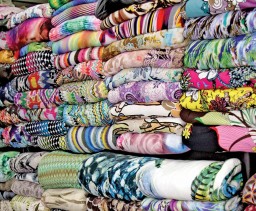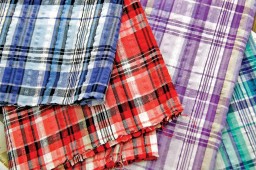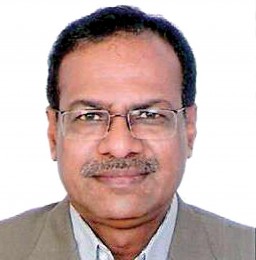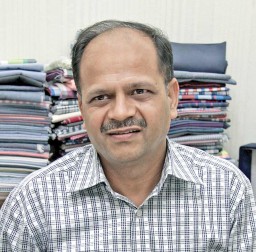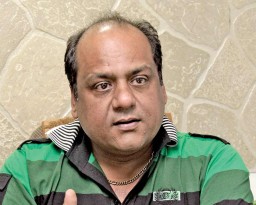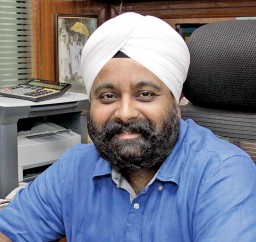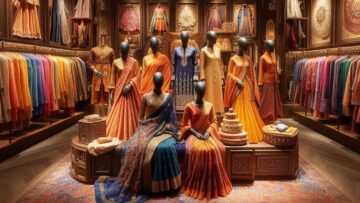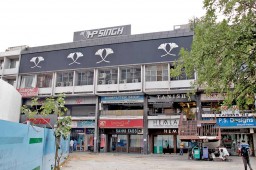
Nehru Place, Delhi has been paradise for garment exporters and buying offices to scout for new developments in fabrics for sampling. The hub has also attracted designers and small boutique players from across the globe, but now the fabric merchants sitting in this market seek larger client base and are aggressively promoting the ‘fabric square’ among domestic players. With a very wide variety of fabrics available in this vibrant market place that has rows upon rows of rich inspirations and latest trends in prints, constructions and colour, Nehru Place has earned a unique reputation among global buyers. Team Apparel Online met up with a few fabric merchants and members from the “Export Fabric Supplier’s Association” to understand how the market is moving and why the sudden desire to increase client base and footfall…
Housing around 80 showrooms, specialising in all varieties of creative fabrics produced mostly in Indian mills, Nehru Place is doing an annual sales of Rs. 2000 crore out of which 80 per cent of the share is from garment export industry. The merchants at Nehru Place believe that they have the most trend updated collections, in synergy with international directions, and that is why the hub has become a major centre for fabric sourcing for sampling, but the merchants now feel that with fashion becoming more universal, smaller brands, retailers and boutique owners from the country should explore what they have to offer so that a whole new segment of clients are added to the buyer base of the market. “We are maintaining a well stocked showroom-cum-offices with the best fabric developments from across India and there is a real estate-cum-running cost to it. For years we have been popular with buying offices, garment exporters and international buyers, now we also want to attract boutique owners who are presently procuring their fabrics from Chandni Chowk and in Rajouri Garden, where alone there are about 700 boutiques,” informs Suman Bhakhri of Fashion Fabrics, who is selling knitted fabrics.
Corroborating Suman’s thoughts, Bhagwan Bahirwani of Globe Tex, specialising in linen fabrics says, “As far as importers or garment exporters are concerned, whether sitting in Delhi-NCR, Bangalore, Ludhiana or Chennai, they all know Nehru Place; our target now is retailers and boutique players. Also Nehru Place is capable of catering to all kinds of buyers and not just for those looking at fabrics for fashion wear. We have the capability to provide fabrics for uniforms, corporate dressing, workwear, school uniforms, sportswear, and almost any category. This is the awareness that we want to create, so that every wholesaler of Nehru Place has busy counters.”
HP Singh, which is known for its variety of fabrics, is a one-stop-solution for any fabric procurer, be it the buying office, designers or global boutique players. According to Bashi Singh, MD, HP Singh, in the last two-three years the footfall from unconventional markets like Australia, Chile, Argentina, and Brazil has increased which keeps the hub ticking all around the year. Even small boutique players and small retailers sitting in a corner of the globe have started flowing into Nehru Place for developments. “The footfall from the southern hemisphere has increased; it’s not that they have started coming now, they were coming earlier too. However they were buying only old stocks, but now they have become trend forerunners and the best part is that our dull season is their peak season.”
Innovative in their approach to marketing fabric, HP Singh was the first to introduce the concept of iron racks so that they could expand or reduce the section as per the need, but now he feels that there is drastic change in the buying pattern. “Suddenly we realized that every variety has its own type of customers and variety has potential for every season. When the international market was gripped by recession we saw lots of domestic brands coming here for both traditional and western wear, also many boutique buyers from all over the world started visiting the market as they cater to select clientele which is not affected by recession so much and thought their orders are small for us, it’s a good cash & carry business. If you see brands like Zara, their styling is creative but their inputs are not creative meaning they are doing almost no surface ornamentation in garments but the boutiques are doing a lot of surface ornamentation, so their fabric requirements are much more high-end,” opines Bashi.
Known for its product developments, Checks ‘n’ Stripes is another player in Nehru Place which feels that the market should be accessible to all kinds of buyers and not just branded as the buying hub for garment exporters. “Earlier we used to repel the retail (domestic) customers but now we entertain them. It’s rather easy to deal with a domestic client as they are not so bound by deadlines and we still lack discipline and punctuality desired by overseas customers,” admits Rakesh Gupta, who is using the CAD software called “Vision” for past 12 years to develop designs for yarn dyes checks and stripes in-house. He hires freshers passing out from fashion institutes and trains them on this software. “These youngsters come with new ideas and are always innovative. Fashion industry is all about new and fresh designs every time; it’s the backbone of our industry,” he adds.
Nehru Place is not only the home to merchants, but also houses a few fabric manufacturers like Sachdeva Textiles and B.P. Textile Mills who prefer to sell their fabric to garment exporters as they place volume orders. Basant Jain, representing B.P. Textiles of Salem which specializes in yarn dyes fabrics reasons out, “The quantities for garment exporters is really big and the domestic brands don’t even meet our minimums. We at least need 1500-2000 metres run to be viable and the domestic brands start with 800 or 1200 metres, which for a mill to produce is not possible as there is cost involved in manufacturing.” Twenty per cent of B.P.’s sales are done through sampling orders and the rest 80 per cent is through buyers who give their own designs and the company develops the fabric. Besides big export houses like Orient Craft and Omega Designs to mention a few, the company is selling its fabrics to domestic players like Numero Uno and UCB.

